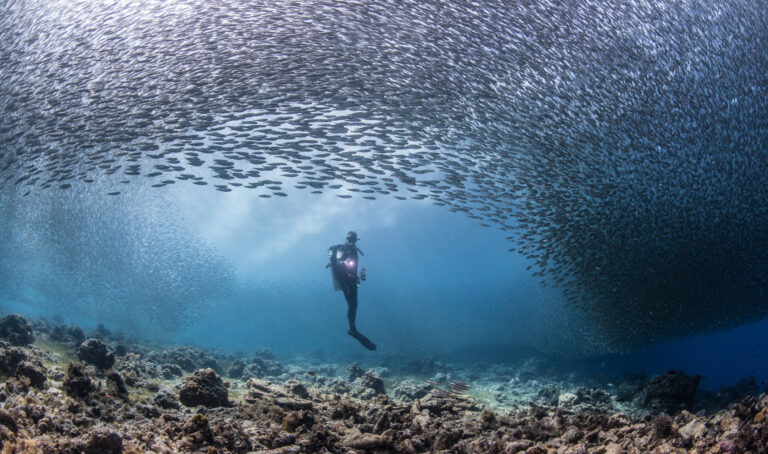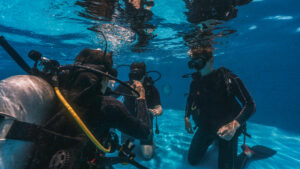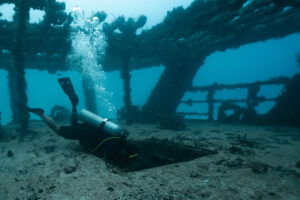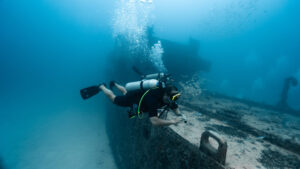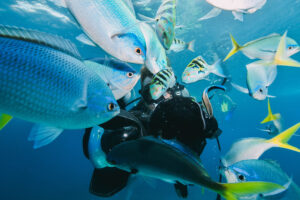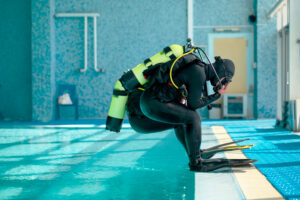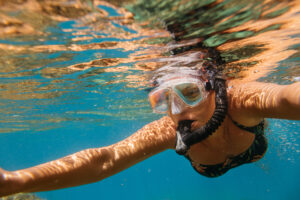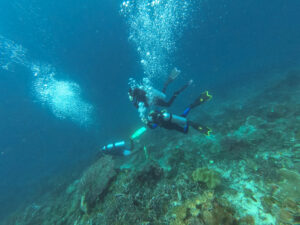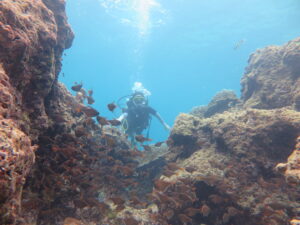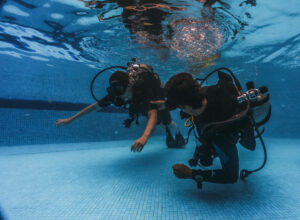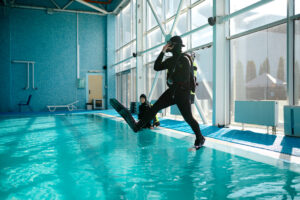What is a K Valve?
The K valve is an essential component in scuba diving equipment, playing a critical role in ensuring the safe and efficient delivery of air from the scuba tank to the diver. This valve, typically found atop scuba tanks, allows divers to control the flow of air with precision. Its design and functionality have made it a popular choice among divers for decades. Understanding the K valve is crucial for anyone involved in scuba diving, as it impacts both safety and the overall diving experience.
Historical Development
The development of the K valve is rooted in the early days of scuba diving, when divers sought reliable ways to manage their air supply underwater. Initially, the valves used in scuba tanks were rudimentary and lacked the advanced safety features found in modern designs. The introduction of the K valve marked a significant improvement, providing a more secure and user-friendly method to control air flow.
In the mid-20th century, scuba diving gained popularity, and the need for better equipment led to innovations in valve technology. The K valve emerged as a reliable solution, thanks to its straightforward design and ease of use. Inventors and engineers focused on creating a valve that could withstand the harsh underwater environment while offering divers a dependable mechanism to regulate their air supply. This period saw the transition from basic, manually operated valves to more sophisticated systems incorporating safety features such as burst disks.
The K valve’s development was influenced by key figures in the diving community who recognized the importance of safety and reliability. Their contributions helped shape the modern K valve, ensuring it met the rigorous demands of recreational and professional divers. As scuba diving continued to evolve, the K valve remained a cornerstone of diving equipment, celebrated for its simplicity and effectiveness.
Design and Functionality
The K valve’s design is a testament to engineering focused on reliability and ease of use. It consists of several key components, each playing a vital role in its operation. The main valve body is typically made from durable materials like brass or stainless steel, ensuring it can withstand the pressures encountered underwater. Attached to the main body is an O-ring, which provides a secure seal between the valve and the scuba tank, preventing leaks.
One of the standout features of the K valve is the burst disk, a crucial safety mechanism. The burst disk is designed to rupture if the pressure inside the tank exceeds safe limits, allowing the excess pressure to escape and preventing potential explosions. This feature adds an extra layer of safety, reassuring divers that their equipment will perform reliably even in extreme conditions.
Operating the K valve is straightforward, making it accessible for divers of all experience levels. To open the valve, divers turn the knob counterclockwise, allowing air to flow from the tank to the regulator. Closing the valve is simply a matter of turning the knob clockwise, cutting off the air supply. This intuitive operation is one of the reasons the K valve remains a popular choice among divers.
When compared to other types of valves, such as the DIN valve or the J valve, the K valve stands out for its simplicity and ease of use. While DIN valves offer a more secure connection, they can be more challenging to handle, especially for novice divers. The J valve, with its built-in reserve feature, has fallen out of favor due to its complexity and potential for confusion. In contrast, the K valve’s straightforward design makes it a reliable and user-friendly option for divers worldwide.
Safety Features
Safety is paramount in scuba diving, and the K valve incorporates several features to ensure diver safety. One of the primary safety mechanisms is the burst disk, which protects against over-pressurization. In the event of a pressure spike, the burst disk ruptures, allowing excess pressure to escape and preventing catastrophic failure of the tank. This feature is especially important in scenarios where tanks are exposed to high temperatures, such as during transportation or storage in warm climates.
The K valve’s O-ring is another critical safety component. It creates a watertight seal between the valve and the tank, preventing air leaks that could compromise a diver’s air supply. Regular inspection and maintenance of the O-ring are essential to ensure it remains in good condition and provides a reliable seal. Divers are advised to carry spare O-rings and replace them periodically to maintain optimal performance.
In addition to these built-in safety features, the K valve’s design promotes safe handling and operation. The straightforward mechanism reduces the likelihood of user error, which can be a significant factor in diving accidents. Divers are trained to operate the K valve confidently, ensuring they can manage their air supply effectively in various underwater situations.
Despite its robust safety features, it is crucial for divers to conduct regular inspections and maintenance of their K valves. Checking for signs of wear, such as cracks or corrosion, and ensuring the valve operates smoothly can prevent potential issues during dives. By adhering to recommended maintenance practices, divers can rely on their K valves to perform safely and effectively.
Maintenance and Care
Proper maintenance and care of the K valve are essential to ensure its longevity and reliable performance. Routine maintenance involves several key steps that divers should follow to keep their valves in optimal condition. One of the most important aspects of maintenance is regular cleaning. After each dive, the valve should be rinsed with fresh water to remove salt, sand, and other debris that can cause corrosion or blockages.
In addition to cleaning, divers should inspect the K valve for signs of wear and damage. This includes checking the O-ring for cracks or deterioration and ensuring the burst disk is intact. If any issues are detected, the affected components should be replaced immediately to maintain the valve’s integrity. Regular lubrication of the valve’s moving parts is also recommended to ensure smooth operation and prevent seizing.
Storage is another critical factor in the care of the K valve. When not in use, the valve should be stored in a cool, dry place away from direct sunlight and extreme temperatures. Proper storage prevents the degradation of materials and helps extend the valve’s lifespan. Divers should also avoid storing tanks with the valve fully closed, as this can compress the O-ring and cause it to lose its sealing ability over time.
Addressing common problems with the K valve requires a proactive approach. For example, if a diver notices a leak around the valve, it could indicate a worn O-ring or a loose connection. In such cases, replacing the O-ring or tightening the valve can resolve the issue. If the valve becomes difficult to operate, cleaning and lubricating the moving parts can restore smooth functionality.
By following these maintenance and care practices, divers can ensure their K valves remain reliable and safe for use. Regular attention to the valve’s condition and prompt resolution of any issues are crucial for maintaining optimal performance and preventing equipment failure during dives.
Installation and Compatibility
Installing a K valve is a straightforward process that requires attention to detail to ensure a secure and leak-free connection. The first step in installation is to ensure the scuba tank is empty and free of pressure. This is a critical safety measure to prevent accidents during the installation process. Once the tank is depressurized, the valve can be screwed into the tank’s neck, ensuring a snug fit.
To achieve a proper seal, divers should use a torque wrench to tighten the valve to the manufacturer’s specifications. Over-tightening can damage the valve or the tank threads, while under-tightening can result in leaks. The use of an appropriate thread sealant is also recommended to enhance the seal and prevent air from escaping.
Compatibility is a key consideration when selecting a K valve. Divers must ensure that the valve is compatible with their scuba tank and regulator. Most K valves are designed to fit standard tanks and regulators, but it is essential to verify compatibility before installation. Some tanks may require specific adapters or modifications to accommodate the K valve, so consulting the manufacturer’s guidelines is advisable.
Ensuring a secure fit is vital for safe diving. After installing the valve, divers should conduct a thorough inspection to check for leaks and ensure the valve operates smoothly. This includes turning the valve on and off to verify that it controls the air flow correctly. Any signs of leakage or difficulty in operation should be addressed immediately to prevent issues during dives.
Proper installation and compatibility checks contribute to the overall safety and reliability of the K valve. By following these steps, divers can be confident that their equipment will perform as expected, providing a steady and secure air supply underwater.
Regulatory and Standards Overview
The design and usage of K valves are governed by various regulations and standards to ensure diver safety and equipment reliability. These standards are set by organizations such as the American National Standards Institute (ANSI) and the Professional Association of Diving Instructors (PADI). Adherence to these standards is crucial for manufacturers and divers to ensure that the equipment meets safety requirements and performs reliably.
One of the primary standards affecting K valves is the pressure rating, which dictates the maximum pressure the valve can safely handle. This rating is typically indicated on the valve and must be adhered to prevent over-pressurization and potential failure. Regulatory bodies require that valves undergo rigorous testing to verify their pressure ratings and overall durability.
Another important aspect of regulatory oversight is the material and construction standards for K valves. These standards ensure that the materials used are capable of withstanding the harsh underwater environment, including exposure to saltwater and varying temperatures. Brass and stainless steel are commonly used due to their corrosion resistance and strength.
Training and certification for divers also play a role in the regulatory landscape. Organizations like PADI provide guidelines and training programs to educate divers on the proper use and maintenance of K valves. These programs emphasize the importance of understanding valve operation, conducting regular maintenance, and following safety protocols.
Compliance with these regulations and standards is essential for ensuring the safety and reliability of K valves. Manufacturers must adhere to stringent guidelines during the production process, while divers must be knowledgeable about proper usage and maintenance. By following these standards, the diving community can continue to rely on K valves as a dependable component of their equipment.
Key Takeaways
The K valve is a critical component in scuba diving equipment, known for its reliability and ease of use. Understanding its design, safety features, and maintenance requirements is essential for ensuring a safe and enjoyable diving experience. Proper installation and adherence to regulatory standards further enhance the valve’s performance and safety. By following recommended practices, divers can rely on the K valve to provide a secure and efficient air supply underwater.

